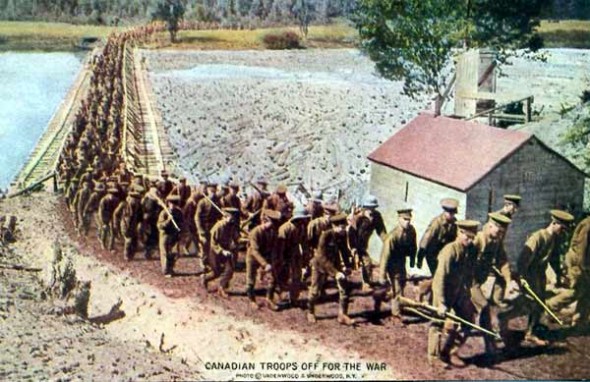About

Florence Green passed away on February 4th, 2012.
She was bed-ridden and living her last years in a small nursing home in England when she took her last breath just weeks shy of her 111th birthday. While Florence may not have been special or unique in any meaningful way outside of her impressive lifespan, she will be forever and indelibly marked in the pages of history.
Why?
Because she was the very last surviving veteran of the Great War.
Florence joined the Women’s Royal Air Force in September of 1918 when she was just seventeen years old. With her death, we have no more direct living historical witnesses to one of the most tragic examples of human misery, death, and self-destruction ever witnessed on planet Earth. The Great War (before World War II, the first World War was known as the “Great War” because it’s horrors and impact were so unimaginable that it was expected to be the ‘war to end all wars’) is rapidly becoming known for a new moniker: the forgotten war.
You would think it unimaginable that a world conflict spanning 5 years and nearly 10,000,000 military lives and millions more civilian would be so little understood and so little studied today. There is not a person living in Europe, many parts of Africa, Asia, and North America that has not been impacted by the first World War. Indeed, you may not even be aware just how much of your own family history was propelled in certain directions and tangents that led to you being here and reading this now all due to events from 1914-1918.
Had the War not occurred, your own direct ancestral history over the last 100 years would almost certainly not have played the way it has occurred. In fact, if you view the Second World War as a consequence and direct result of the First World War, than it’s even more obvious to see the impact on your life and family history.
After all, the Great War wasn’t just about casualties. It was about the arc of life itself. It impacted culture, society, family, employment, and life as we know it in countless and immeasurable ways. Your great grandparents made decisions based on the reality of war-time whether they were personally involved in the Great War or not.
So how do we preserve the First World War? How do we capture, digest, understand, and live the history and the memory of this worldly event? Surely, it deserves more than a moment of silence on November 11th.
We could read diaries, research events, and write about them. But even a good book has to be read to have any worth whatsoever. Who would read a book on a War that is rapidly becoming forgotten? No, the story must be told in a more engaging way… or better yet, it must be ‘shown’.
Each Worth 1000 Words…
If a picture is worth a 1000 words than creating a website with thousands of pictures may be the best and most complete way to piece together the narrative of the War. It’s my objective to steadily and progressively add thousands of actual image, photographs, and art taken from the First World War and feature them on PicturesOfWorldWar1.com.
I will start with the known and easily accessible photographs and then invite any of you who have private family pictures depicting scenes of the Great War to submit them to the site and share them with the world. Hopefully in time, if the project becomes successful, we’ll have the most complete pictorial account of the First World War freely available to anyone interested. Call it artistic expression, photojournalism, time travel, curiosity magnet or whatever you wish, but PicturesOfWorldWar1.com will expose and document the horrors of war and ensure that – as a historical record or directory – this archive will inform and educate adults and children alike on the war that was to end all wars.

I’m a believer in the power of pictures. But I know that pictures need context. Where possible, I will try and provide a frame of reference or general information that spans through all the main aspects and realities of World War I. After studying countless pictures of life during World War One, I’m certain it will lead you too to a greater impression, knowledge, and appreciation of the magnitude of this event.
To that end, I must warn you that there are some graphic images here. War isn’t pretty. And if we’re to learn from our past, we must witness the kinship and camaraderie in the same dosages as the gore and mutilation. It just wouldn’t do justice to the fallen if I arbitrarily censored images because I found them difficult to view and witness.
I’m not sure if I’ll meet the challenge, or fall short, or hopefully, exceed it! But I am sure I will try my best. I certainly could use the time and effort of volunteers to help in building the library, cataloging the pictures, and/or providing accurate captions and information on the photos on the site. That would be outstanding.
In 2014, it will be the 100th anniversary of the start of World War I. This is perhaps the best and only time we will have to effectively engage and educate current generations on this world conflict. Maybe with a lot of effort and a little help, we can all do our parts to make sure Florence wasn’t the last connection to the Great War. To that end, maybe there is still hope that we can add the word “never” to the “forgotten war”.
Kindest Regards,
Andrew.
World War I Enthusiast